Chhatarpur temple located in New Delhi is dedicated to Goddess Katyayani. She is an incarnation of the goddess Durga, who is revered as the embodiment of Shakti. Along with the expansive temple, on the premises are several smaller temples honoring Ganesh, Shiva, Vishnu, and Lakshmi. The temple was founded in 1974 by Baba Sant Nagpal Ji. For posterity, his Samadhi shrine is situated on the grounds of the Shiv-Gauri Nageshwar Mandir, which is a part of the temple complex.This exquisite temple is a work of architectural art as well as a place of worship.
Location
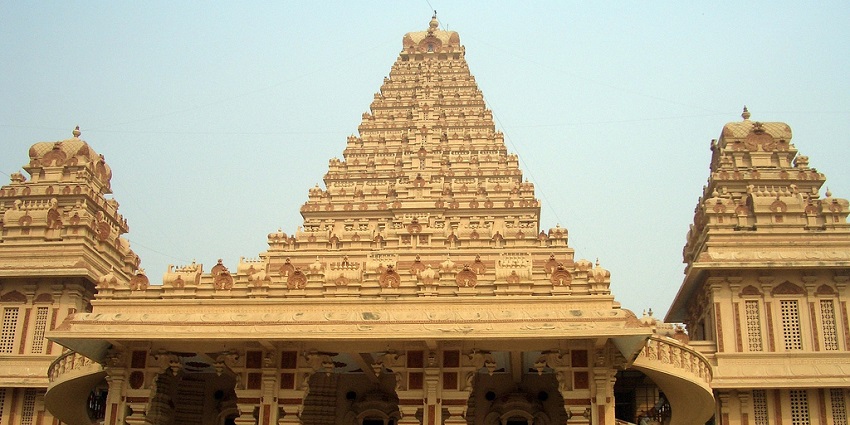
Photo: Manjeet Bawa / Wikimedia Commons
Chhatarpur Temple, Delhi, is located a short way from Qutub Minar, in the Chhatarpur area of South Delhi. It is situated near the Chhatarpur Metro Station on the Yellow Line, amidst green environs. In contrast to the busy metropolis, the temple’s tranquil setting provides both worshipers and guests with a tranquil haven.
Suggested Read: Temples In Dwarka Delhi
How To Reach Chhatarpur temple
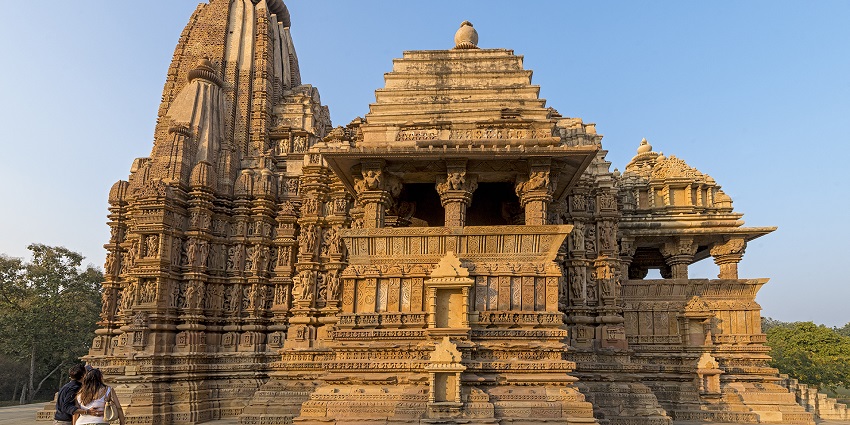
Photo: Sangramgovardhane / Wikimedia Commons / Image For Representation Only
By Train: The New Delhi train Station, which has connections to all of India’s main cities, is the principal train station closest to the Chhatarpur Temple. The temple is around eighteen kilometers from NDLS. To go there, one can take an autorickshaw or cab, or use Delhi Metro services.
By Road: When in Delhi, there are a number of alternatives available to you. You can commute by metro by the respective metro station near your location and reach the Chhatarpur metro station on Yellow line. You can also reach the temple directly by auto rickshaw, taxi, or cab.
By Bus: Chhatarpur Village bus stop and Chhatarpur Crossing are the closest bus stops near the temple.
Other Famous Temples In Delhi
1. Akshardham Temple
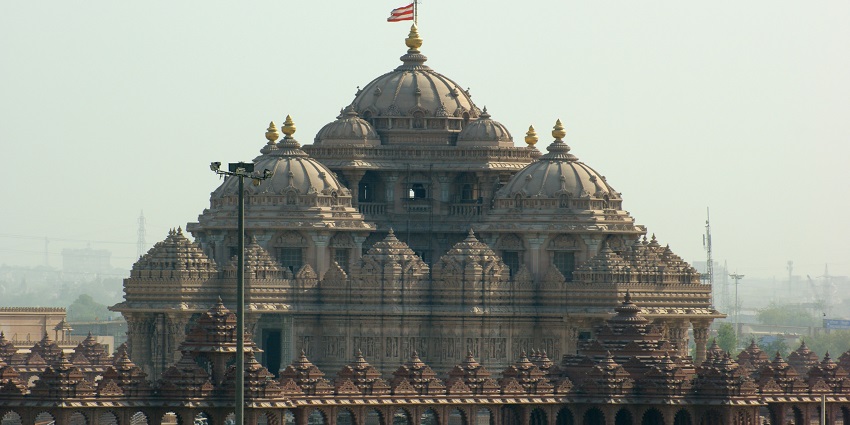
Photo: Daniel Echeverri / Wikimedia Commons
One of the architectural marvels, Akshardham Temple, has been dedicated to Lord Swaminarayan (1781–1830), an avatar, deva, and great sage of Hinduism. The creation can be witnessed as an opening to a thousand years of culture and tradition. This colossal edifice took nearly five years to build and was inaugurated on 6 November 2005. This magnificent building, now standing on the banks of the Yamuna River, attracts millions of pilgrims from around the country.
Timings: 9:30 AM – 7:30 PM
Entry Fee: ₹170 – Adult , ₹100 – Children , ₹125 – Senior Citizens
Suggested Read: Ganesh Temples In Delhi
2. Birla Temple
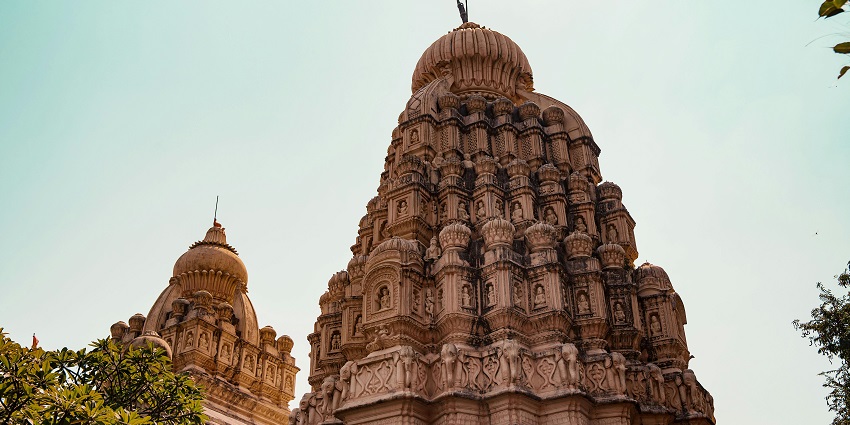
Photo: हर्षल/ Pexels / Image For Representation Only
One of the main temples of Delhi and a major tourist attraction is Birla Temple, otherwise called Lakshmi Narayan Temple, located on Mandir Marg to the west of Connaught Place. This beautiful temple was constructed in 1938 by the industrialist BD Birla. It has side temples dedicated to Lord Shiva, Krishna, and Buddha, the main temple itself is dedicated to Laxmi, the goddess of prosperity, and Narayana, the preserver.
Timings: 4:30 AM – 9 PM
Entry Fee: None
3. Jhandewalan Mandir
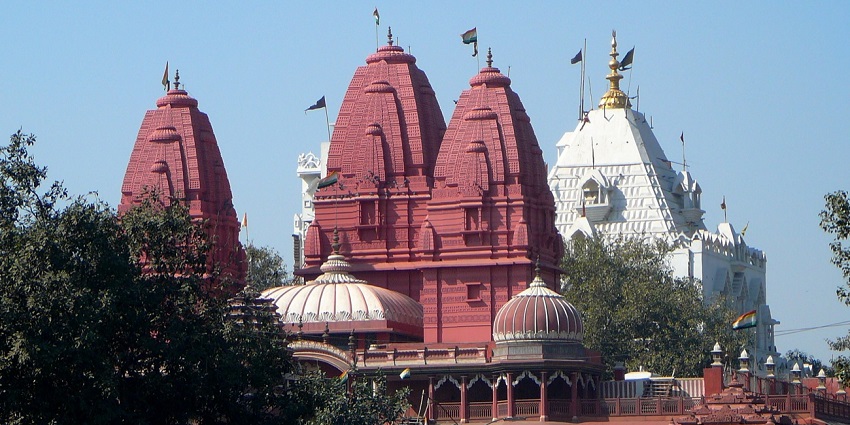
Photo: Art Poskanzer / Wikimedia Commons / Image For Representation Only
Jhandewalan Mandir is an ancient Hindu temple that enshrines within itself Maa Aadi Shakti, who is the Avatar of Goddess Maa Durga. The location of the temple lies on Jhandewalan Road, going towards Karol Bagh in Delhi. It is due to its exquisite construction that the temple looks even more beautiful during the Navratri Festival, when special Puja is conducted and flowers and lights are placed inside the temple. From the prayer flags, or “jhanda” in Hindi, offered at this temple during Shah Jahan’s reign, the temple derived its name of Jhandewalan.
Timings: 5 AM – 10 PM
Entry Fee: None
Suggested Read: Jhandewalan Temple
4. Kilkari Baba Bhairav Nath Temple

Photo: Pratishkhedekar / Wikimedia Commons
Bhairavnath Temple in Delhi is a prominent attraction for the amount of spiritual significance and specific rituals that characterize this temple. Bhairavnath Temple, more popularly known as Kilkari Baba Bhairav Nath Mandir, is among the oldest and most revered temples in Delhi, its laying, by the Pandavas themselves, dates back as far as the age of the Mahabharata. This temple is dedicated to Lord Shiva, enshrined here in the form of Bhaironath Devta, and located just at the back of Old Fort, near Pragati Maidan.
Timings: 5 AM- 9 PM
Entry Fee: None
5. Uttara Swami Malai
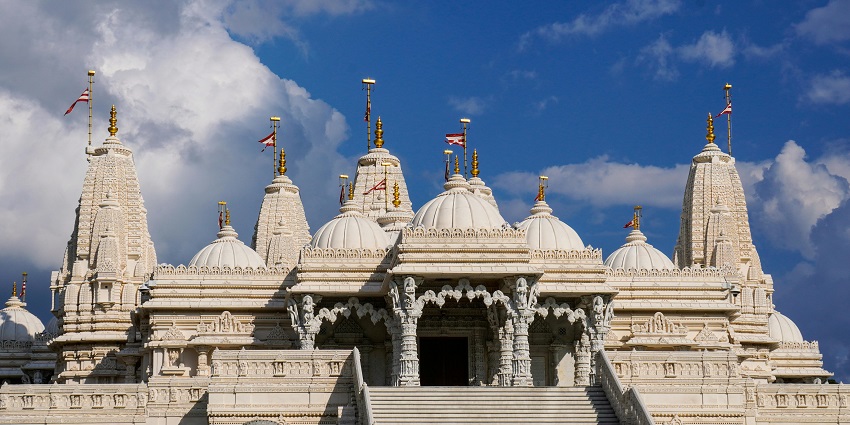
Photo: Koushalya Karthikeyan/ Pexels / Image For Representation Only
The presiding deity of the temple is Lord Swaminatha. The Hindu temple is known locally as Uttara Swami Malai Mandir. The temple receives a huge number of devotees from Delhi’s huge populations speaking Tamil, Kannada, Telugu, and Malayalam. There is a small hill on which the Malai Mandir is positioned and it is constructed wholly with granite stone building in the South Indian architectural style. One could also visit the secondary complex honoring the elder brother, father, and mother of Lord Murugan, besides the main Malai Mandir Temple.
Timings: 6:30 AM – 9 PM
Entry Fee: None
Suggested Read: Kalkaji Temple
Where To stay
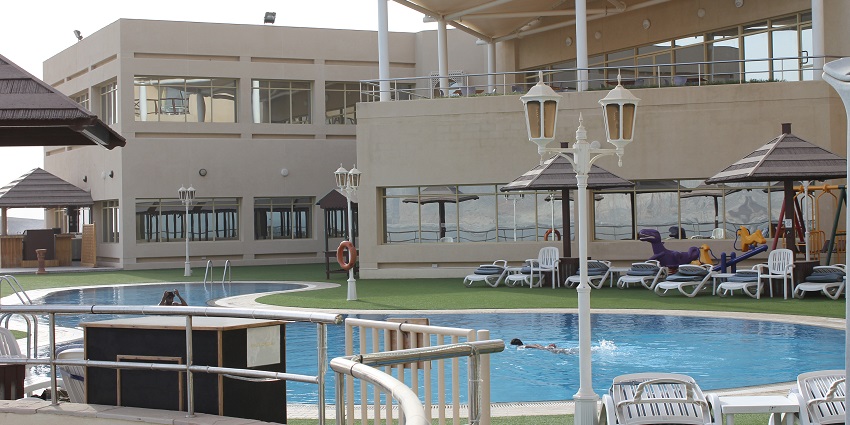
Photo: Xiaotong Gao / Wikimedia Commons
The devotees can get accommodated in the Dharamshala of the Chhatarpur Temple for a short visit. The Dharamshala estate is an extensive one with 36 rooms accommodating six people each and 12 halls accommodating thirty people. There are several hotels situated near Chhatarpur temple.You can choose Amigos Indian, The Estate Villa, Park Boulevard, Golden Tulip Chattarpur and more.
Where To Eat
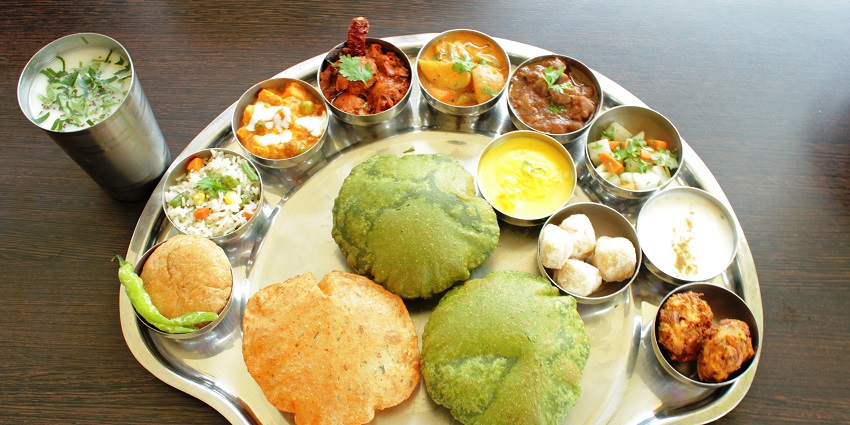
Photo: Vivek3dartist / Wikimedia Commons
Given that Delhi is the city, devotees have a wide range of alternatives. Several local eateries that provide delicious dishes are : Cafe Dori, Mamagoto, Pirates of Grill, Side Wok, Perbacco, TGI Friday’s, Food Forest, Reeve and more. Clean as well as delicious food is provided here. People who visit Chhatarpur Temple get food here at reasonable prices.
Suggested Read: Delhi Temples
Other Factors To Consider
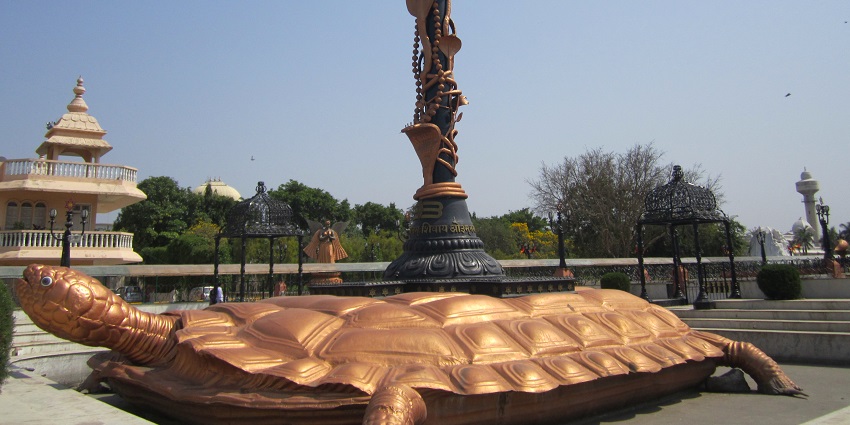
Photo: Seervims / Wikimedia Commons
Best Time To Visit
The best time to visit the temple is during Navratri. When Hindus celebrate Navratri in October, this temple is at its busiest with special traditions and rituals. This 10-day celebration is held in the goddess Durga’s honor. The everyday Chhatarpur temple timings are 6 AM to 10 PM.
Tips For Traveller
- Be respectful of the temple grounds by dressing modestly.
- Wear comfortable shoes that you can slip off easily.
- While visitors are allowed to click Chhatarpur temple’s photos, it may be prohibited inside the inner sanctum or at some other place. Always look out for signs or ask the staff.
- Especially in the summer heat, carry a bottle of water. They do have facilities with water, but it’s always good to have your own.
One of the most remarkable temple complexes in Delhi is the Chhatarpur Temple. This temple is home to several significant structures as well as shrines and temples dedicated to various significant deities. Without seeing the Chhatarpur Temple, a trip to Delhi is undoubtedly incomplete.Great architectural design in a prime location. Plan your trip with TripXL and be sure to have a memorable experience.
Cover Photo: Sourabh Narwade / Pexels / Image For Representation Only


 WhatsApp
WhatsApp
 Twitter
Twitter









